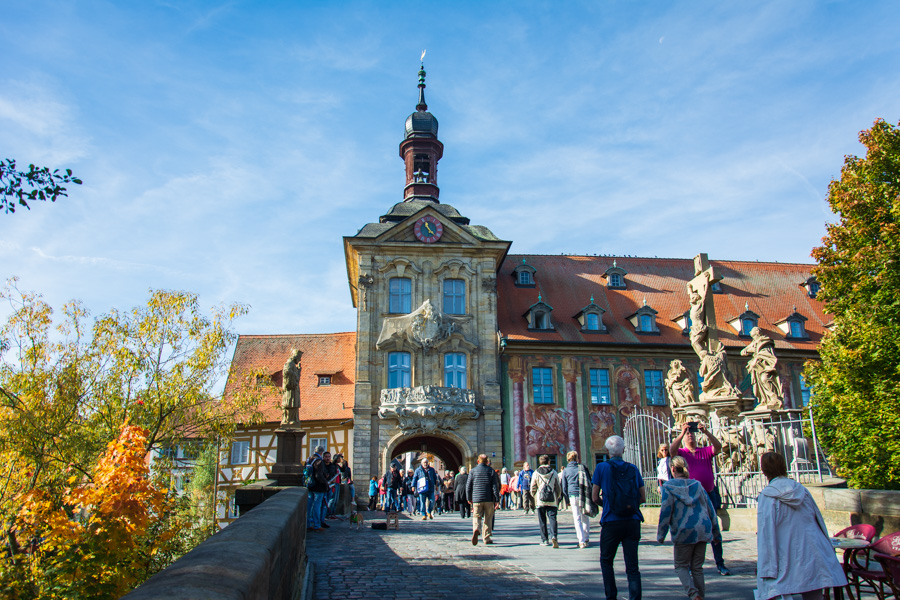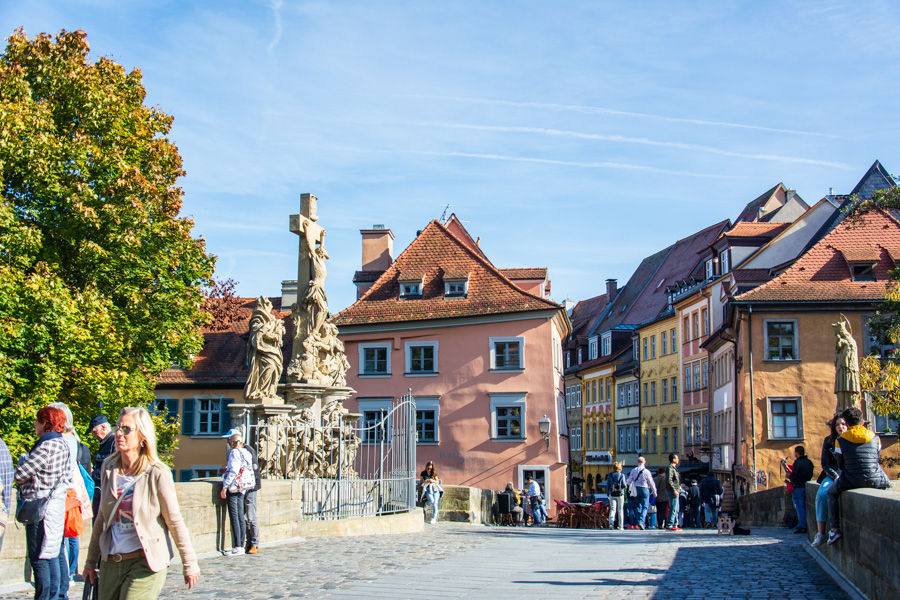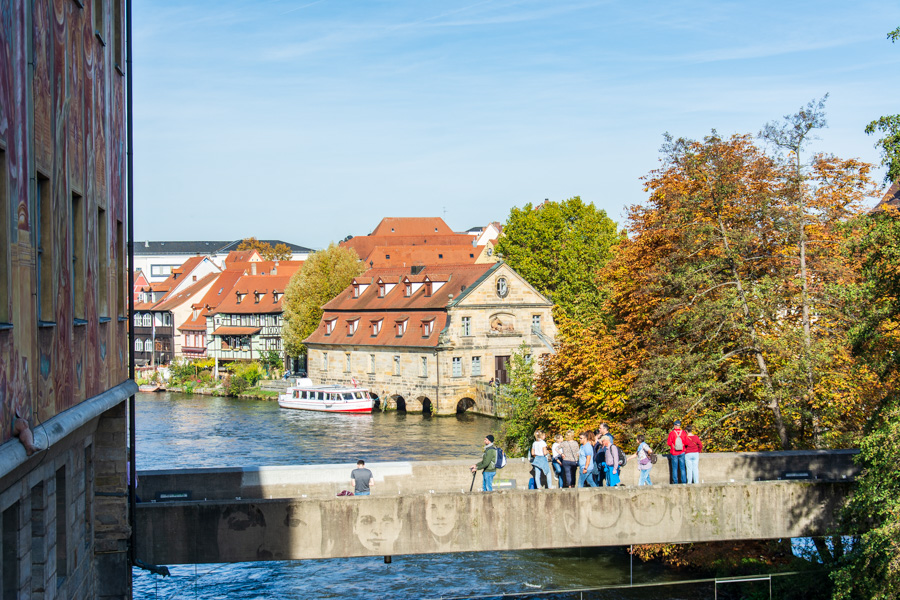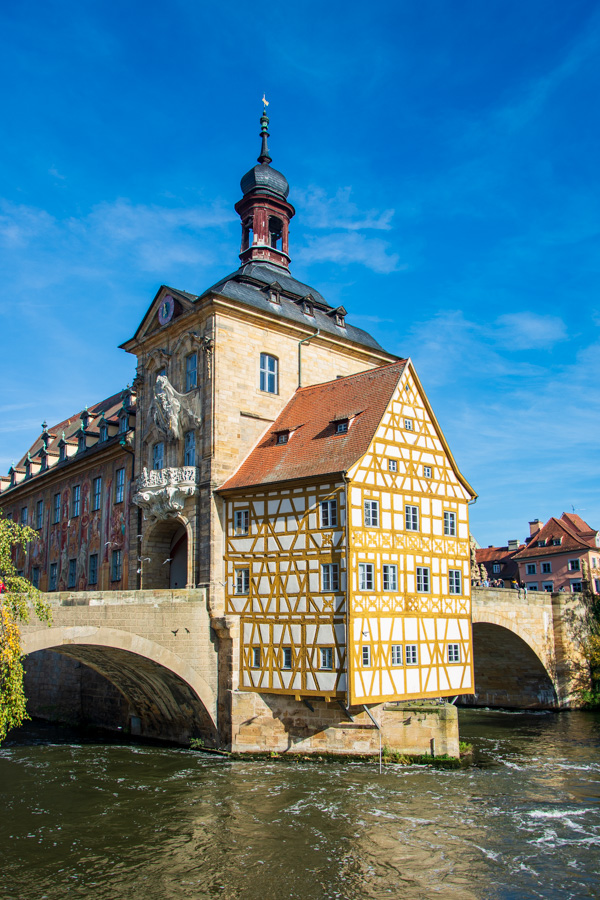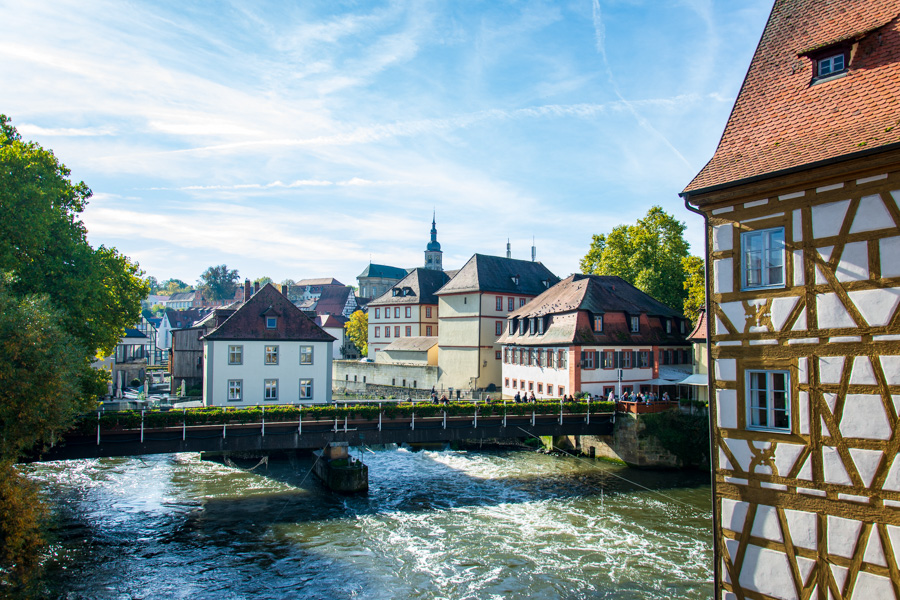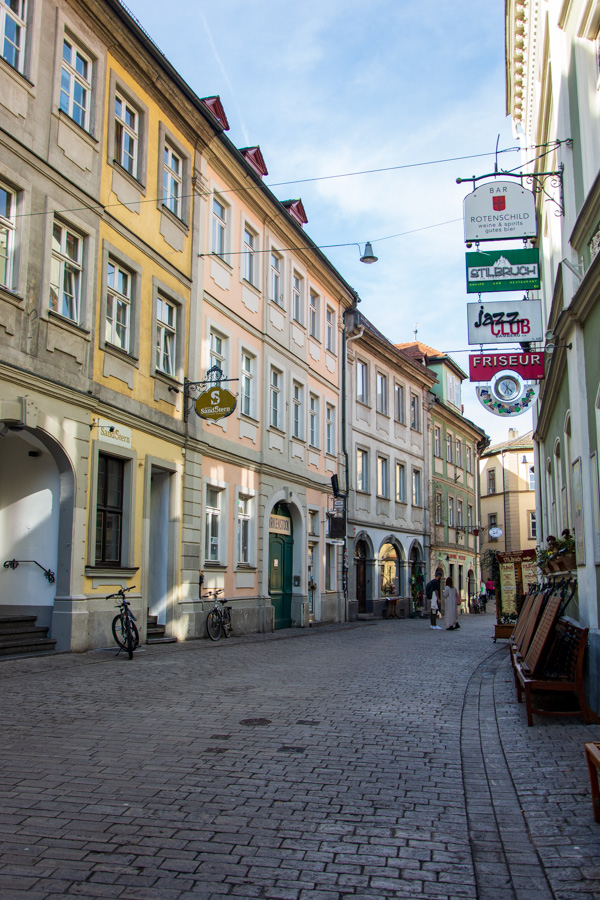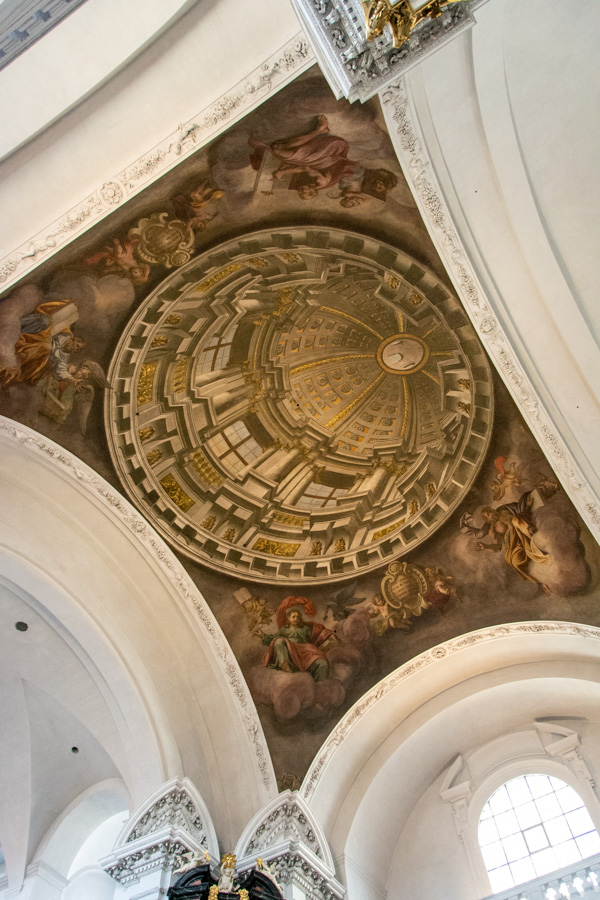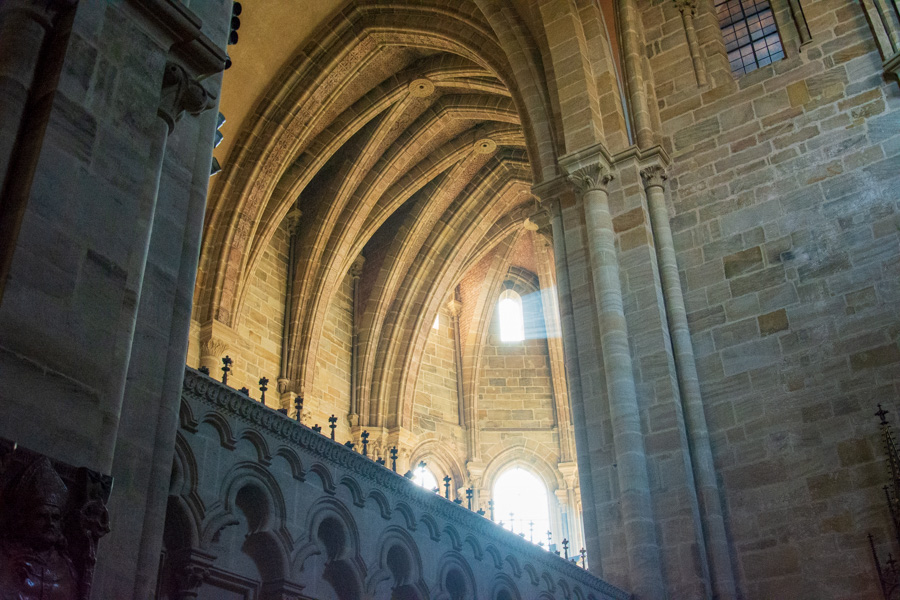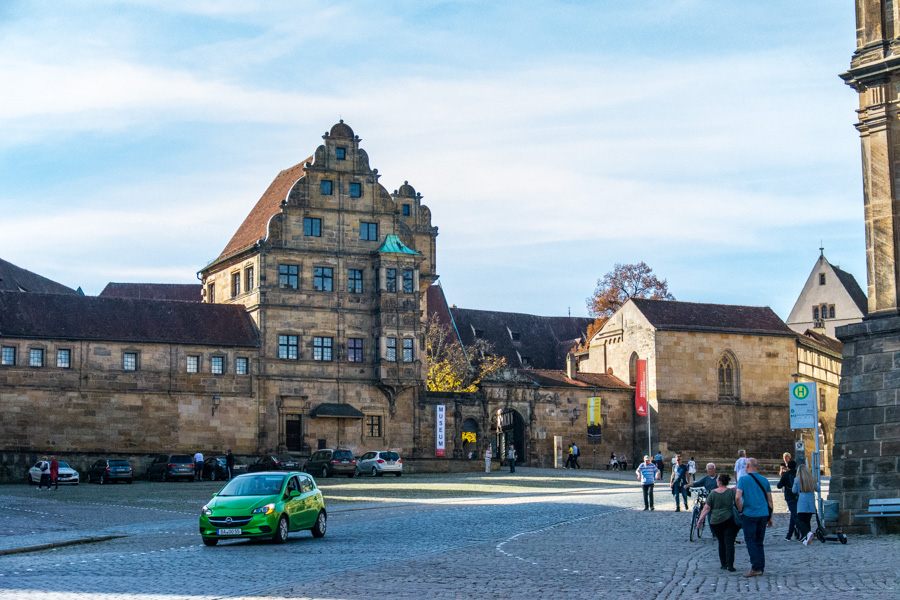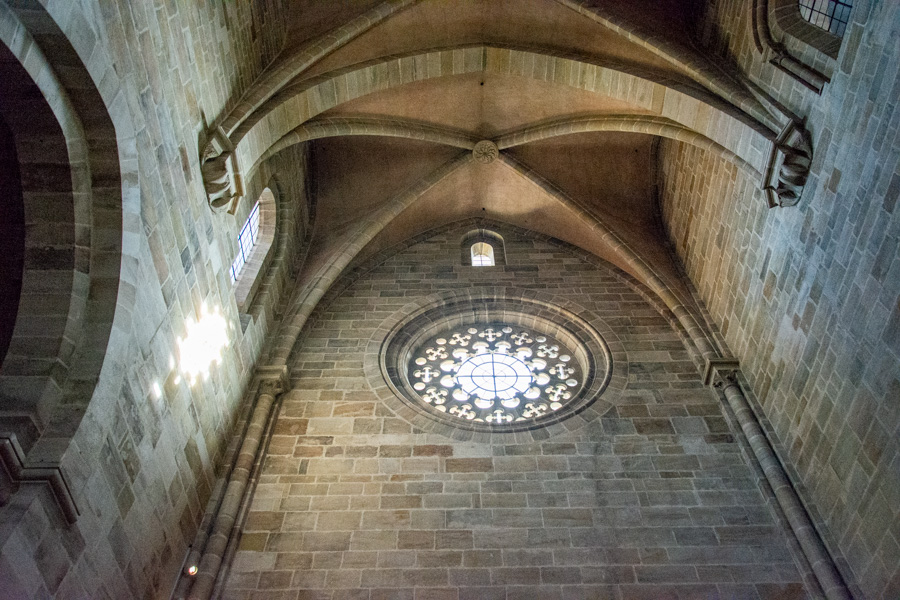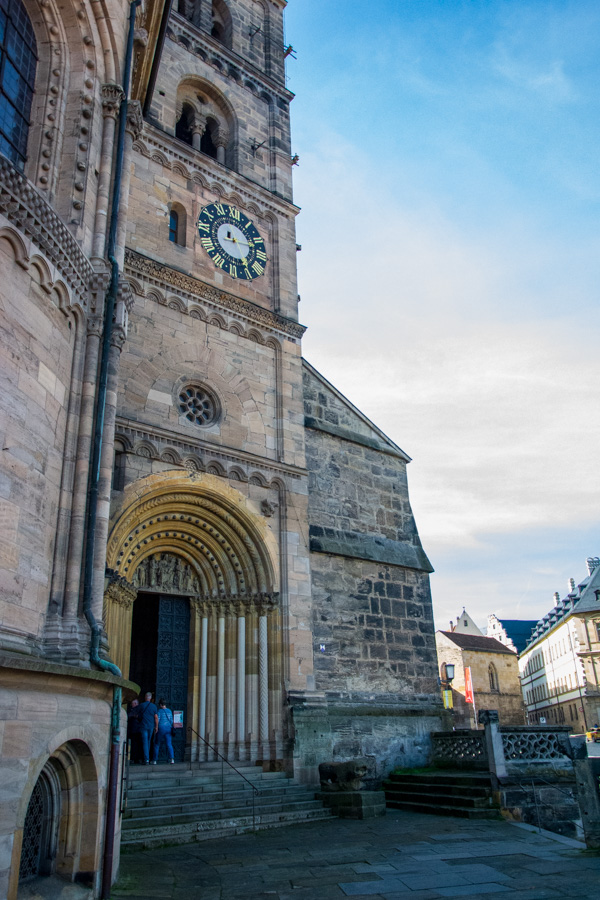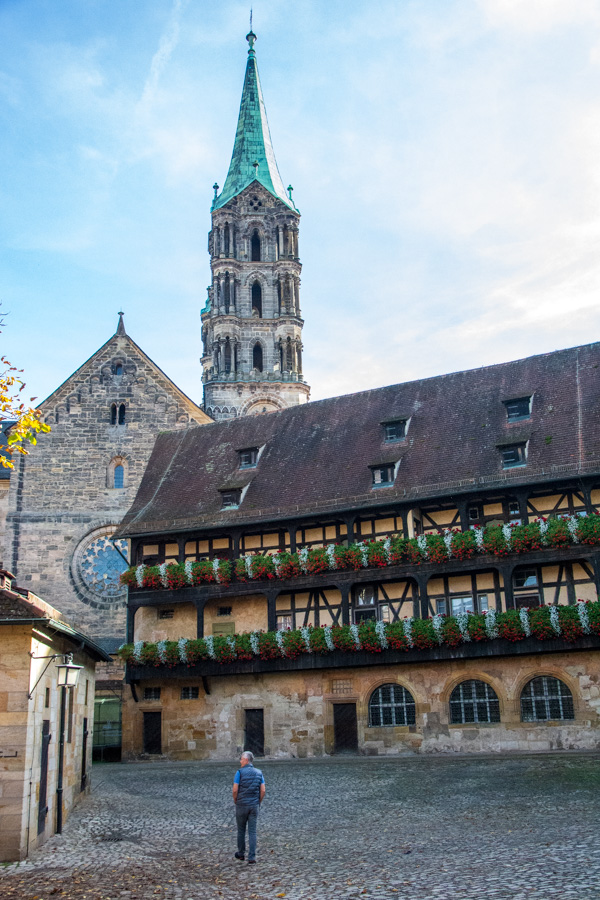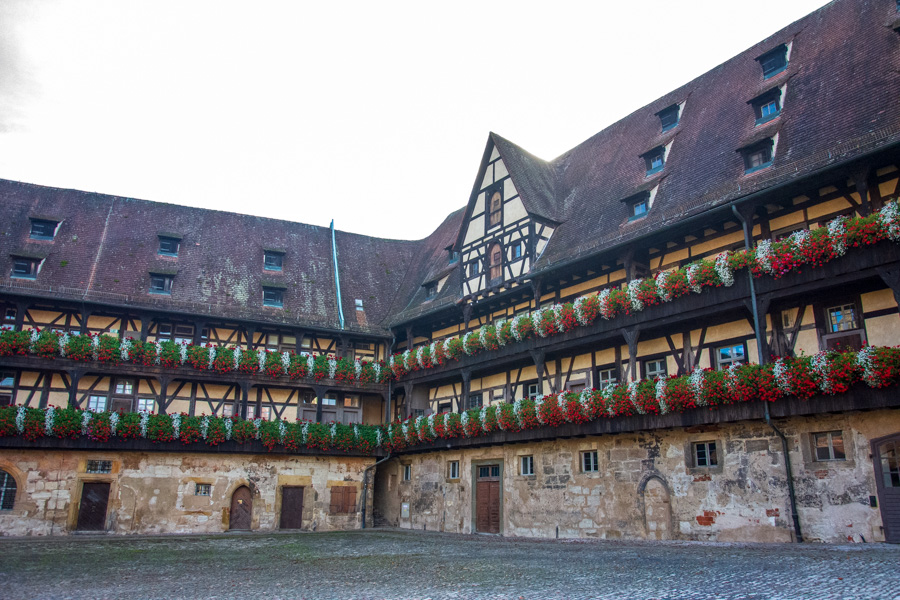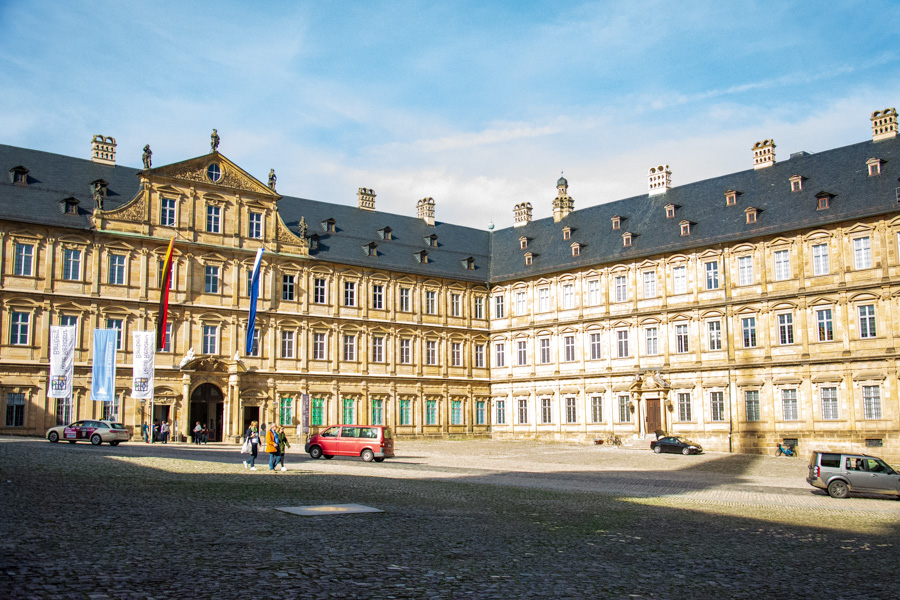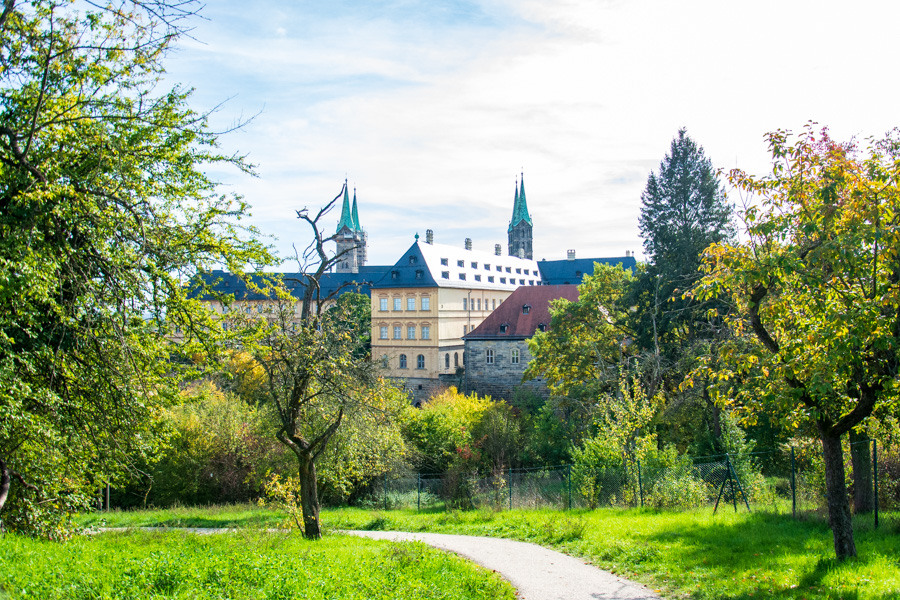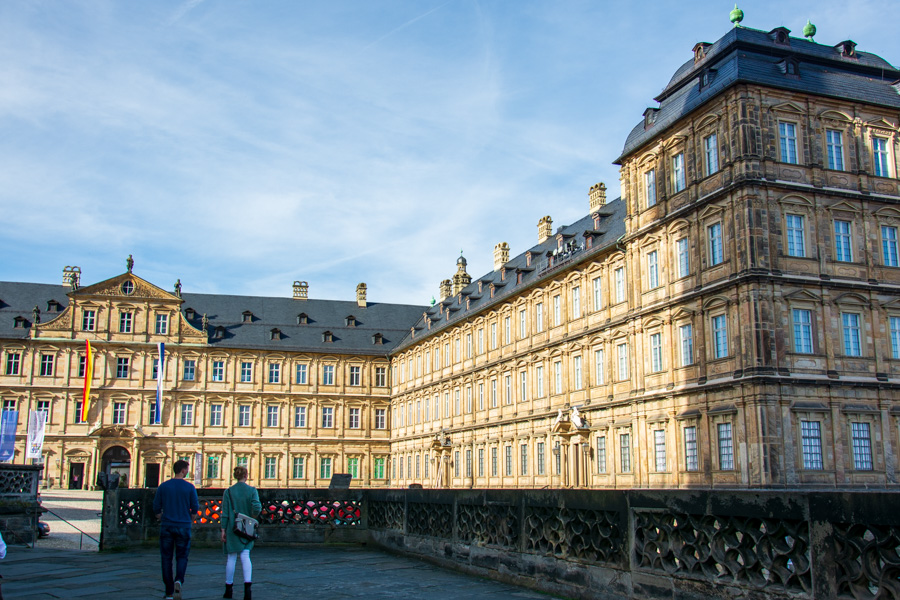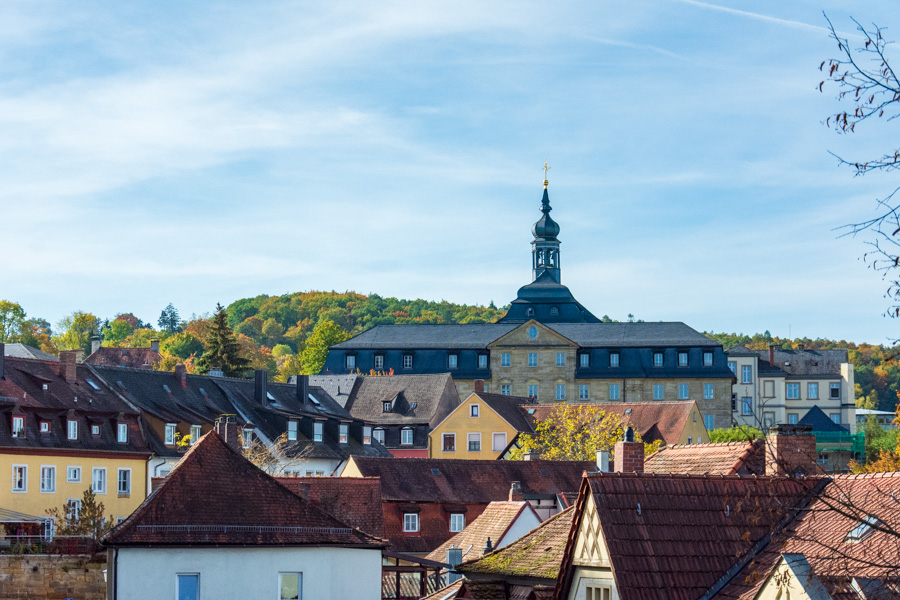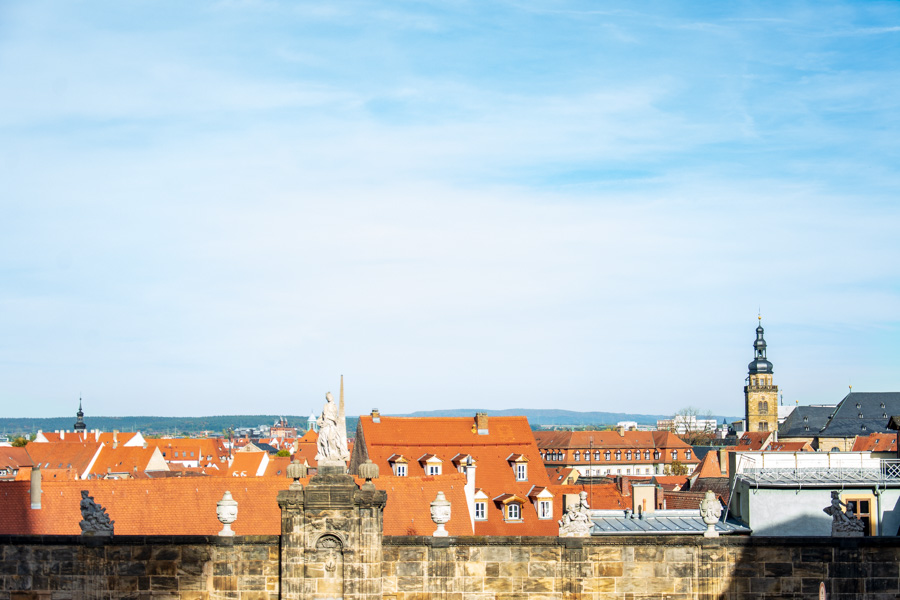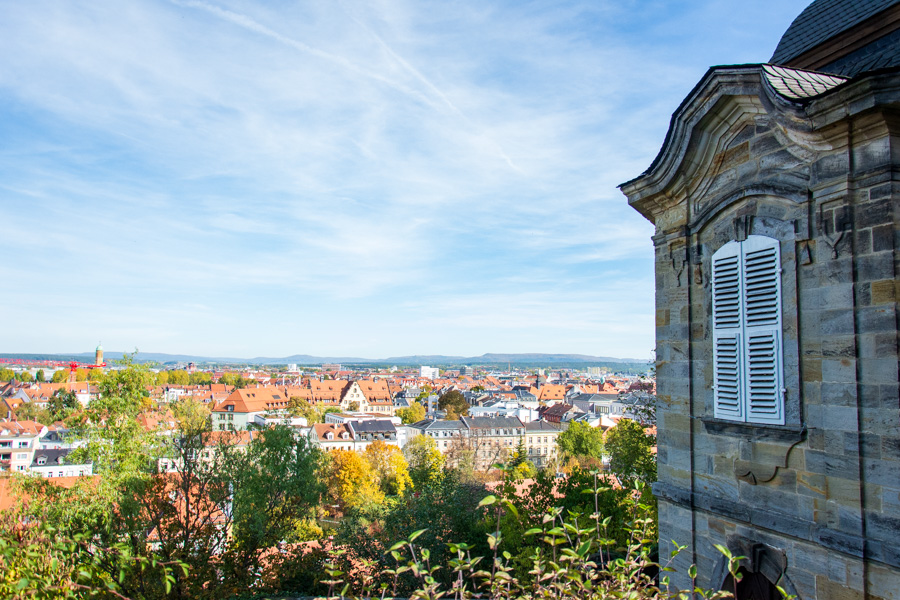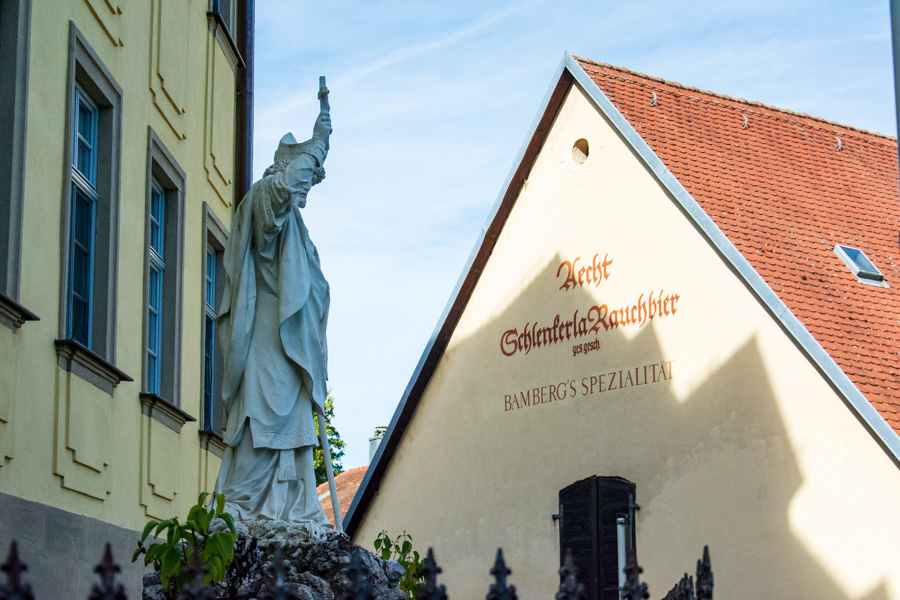Every city has its own unique fingerprint or calling card: all the things that make it special. Maybe that’s a landmark building or a delectable pastry. Bamberg, Germany has so much to offer that its calling card is rather full.
The town in Bavaria‘s northern Franconia region is considered one of the country’s most beautiful. It is full of historic buildings, including some of which date to the medieval era. And it is home to Europe’s largest intact city walls still in existence. It also offers a show stopping Altes Rathaus, or old city hall, that sits precariously on an island of rock dangling over the Regnitz River.
And if all of that wasn’t enough to tempt you, the town is also known for its smoked beer.
With all of these things to do in Bamberg and the convenient location (approximately two hours from Munich and less than an hour from Nuremberg), the town makes for a wonderful Bavarian day trip.
A Brief History
If you’re a history buff or simply looking to expand your horizons and learn more, Bamberg will be a treat. A UNESCO World Heritage Site since 1993, the town dates to at least the 9th century.
In 1015, the town’s influence and importance grew when Michaelsberg Abbey was founded on a hill overlooking Bamberg. During the 12th century, it was, for a time, the center of the Holy Roman Empire. Because the bishops based in the town were also princes of the Holy Roman Empire, they had some extra influence in the town and oversaw the building of some of its remarkable architecture. Later, the town was the final resting place for both Emperor Henry II and his wife.
Today, Bamberg’s Altstadt, or old town, is a popular travel destination due to the remarkable preservation of its medieval roots with half-timbered buildings, colorful facades, and detailed frescoes.
What to See in Bamberg
Starting at the town’s train station and approaching the Altstadt from the east is dramatic. It is like walking back in time. As you pass over several bridges and scenic waterways, the streets with their kebab shops and grocers turn into pedestrian-only areas of boutiques, souvenir shops, and cafes.
On the way towards the Altstadt, be sure to stop at the St. Martin Church. The baroque church is a teaser for the lavishness to come later. But it is the church’s faux dome that catches the eye. The dome in the heart of the church is not lofty and lavishly decorated, but cleverly painted to give the impression of a multi-tiered architectural gem.
Back on the path to the Altstadt, things suddenly jump centuries back in time as the Obere Brücke, or Upper Bridge, leads to the Altes Rathaus, which acts as a sort of gatekeeper to the old city. The whole scene – from the arched cobblestone bridge covered in statues to the half-timber building with beautiful paintings – seems from a fairy tale or a film.
And it is worth a closer look. Just parallel is yet another bridge. This one is known as the Geyerswörthsteg. From there you can see just how close the water really is and how precariously the former town hall hangs over this portion of the Regnitz.
A bit further north along the banks of the river is Klein Venedig, or Little Venice, a collection of beautiful waterfront buildings by which you can stroll.
But in the Altstadt, the streets narrow and meander. It is easy to get lost if you make a turn too quickly but the neighborhood is relatively small so getting lost is part of the adventure of exploring Bamberg. The streets are lined with shops selling antiques, housewares, and all nature of goodies to tempt you.
Domplatz
Bamberg’s royal history sits atop a hill on a square known as Domplatz. There is the Old Court (Alte Hofhaltung), a remarkable and imposing building that once served as the residence of the bishops. Today the complex serves as a museum of the town’s history.
But be sure to step inside the courtyard to marvel at the stone and half-timbered interior that, during the warmer months of the year, is lined with flower boxes full of bright red geraniums.
Just across the square is where you can find all of the real royal glitz and glamor. The Neue Residenz is a Baroque building featuring multiple wings built in the 17th- and 18th-centuries. Within the walls of the Neue Residenz is a formal rose garden.
Also on the square is the Bamberger Dom. Take my advice: never miss a Dom, or cathedral, when visiting a German city. This one certainly does not disappoint.
The cathedral of today is not the first one to sit at the site. At least one earlier church burned down. But the rather large Romanesque cathedral that stands here today was completed in the 13th century. The interior is cavernous with light struggling to get past the thick stone walls. But when the sunlight does enter – such as from a detailed circular window high up near the ceiling – it creates the most beautiful of details.
Michaelsberg
Michaelsberg Abbey sits on a hill overlooking the town. And getting there is an adventure, if you don’t mind walking a bit further. Walking through the Altstadt, past the tempting sightseeing attractions, and off to a narrow street that runs behind the Neue Residenz that quickly turns into a relatively unmarked and unpaved path along fruit trees.
Eventually, your patience pays off. Atop the hill sits the sprawling monastery as well as a restaurant and a few different spots offering stunning panoramic views over the terraced hills of the abbey.
Where to Eat in Bamberg
Wandering through the Altstadt, there is no shortage of choices for a meal or a drink. But the Kachelofen delivers on the kind of comfort and warmth that its name suggests. (A Kachelofen is a built-in masonry stove popular in Germany and other parts of the world.) On a sunny day, sit outside at one of the tables at the bottom of the hill leading up to the cathedral and Old Court. Or, grab a seat inside the pub to experience the character of the building. The staff are friendly and the food includes delicious Frankish specialties.
Schlenkerla Rauchbier or Smoked Beer
It goes without saying that in beer-rich Bavaria, there can be a lot of competition to grab attention and fill glasses. So if you want to experience some unique beer culture, head to Aecht Schlenkerla for a smoked beer. The brewery’s pub is just a stone’s throw from the Kachelofen and has been in business since 1405. It is considered the standard for Rauchbier, a drink that can be divisive depending on your tastes.
But what is Rauchbier?
Literally “smoked beer,” Rauchbier refers to one of the original techniques for drying malted barley. This one uses an open flame in a kiln. The process is said to impart a unique smell and taste.
But as machinery became available that used hot air for the drying, as opposed to the open flame, the technique became less common. Today, only a few Bamberg breweries keep alive the tradition of making beer with smoked malt.
You can enjoy a traditional meal or a drink at the brewery’s pub in Bamberg. During your visit be sure to explore the different rooms of the historic tavern, one of which includes a Gothic ceiling.
Tips for Visiting
Visitors to the Neue Residenz can get a single ticket or a special ticket that offers combined admission with nearby Schloss Seehof in Memmelsdorf bei Bamberg. If you’re planning on visiting other palaces and castles in Bavaria, I recommend saving some money with the Bavarian palace pass.
Getting There & Getting Around
Located near where the Regnitz River meets the Main River, Bamberg is rather centrally located in northern Bavaria as it sits east of Würzburg and north of Nuremberg.
Visitors to the town will want to explore the Altstadt, which is largely a pedestrian-only area. As such, traveling to the town via train is a great option. Because of the town’s location, there are good train connections to other areas of Bavaria as well as the rest of Germany. With Deutsche Bahn’s high-speed ICE trains, the town is roughly two hours from Munich while the travel time is less than an hour with high-speed or regional trains from Nuremberg.
Alternatively, visitors can park centrally and explore on foot.
Save this post for later with Pinterest!
All photos, as well as opinions, are my own.
